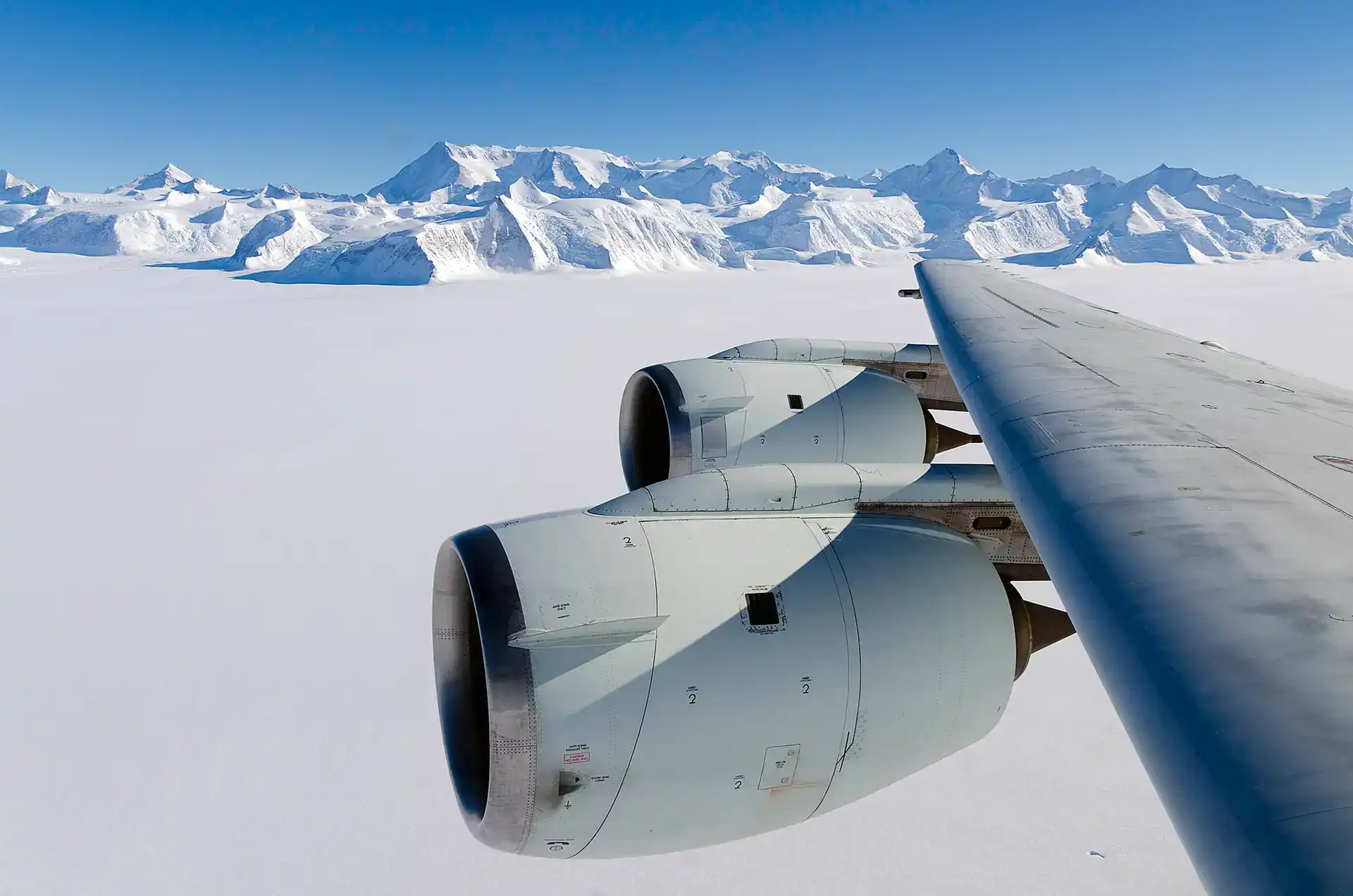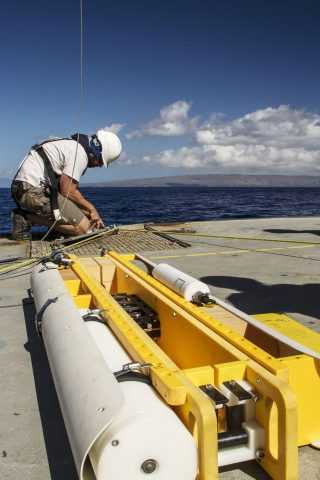
Overview
The Wirewalker is a vertically profiling autonomous underwater vehicle (AUV) designed by Del Mar Oceanographic, LLC. It is powered by ocean waves and can provide measurements over a range of depths due to its rapid profiling. It can perform two-dimensional depth-time recordings instead of typical one-dimensional time series recordings. The Wirewalker has a typical profiling rate of 10 m/min and has a profiling range of up to 500m deep, but it can reach depths of up to 1000m depending on the payload.
Online information
Related Campaigns & Instruments
Review the instruments operated on this platform for each of these field campaigns
Slide 1 of 2

EXport Processes in the Ocean from RemoTe Sensing
2018—2021
Northeast Pacific Ocean, Northeast Atlantic
view all deployment dates
2 Deployments
· 0 Data Products| 2018-07-21 | 2018-09-13 |
| 2021-03-25 | 2021-06-01 |
Generic-Chemistry Related Sensors (Gen-Chemistry) refers to non-specific instruments on a platform used for atmospheric chemistry measurements. These are typically in situ analyzers that measure various chemical compounds such as trace gases, halocarbons, volatile organic compounds, nitrates, aerosols, and other chemical species. Measurements can include mixing ratio, composition, particle size, optical properties, and particle size distribution.
Earth Science > Atmosphere > Atmospheric Chemistry > Trace Gases/trace Species
Earth Science > Atmosphere > Atmospheric Chemistry
Earth Science > Atmosphere > Air Quality > Volatile Organic Compounds
Earth Science > Atmosphere > Aerosols
Earth Science > Atmosphere > Aerosols > Aerosol Particle Properties
Earth Science > Atmosphere > Atmospheric Chemistry > Halocarbons And Halogens
Earth Science > Atmosphere > Air Quality
Earth Science > Atmosphere > Atmospheric Chemistry > Carbon And Hydrocarbon Compounds
Photosynthetically Active Radiation (PAR) Sensors are in situ optical devices used to study photosynthesis and plant physiology. They detect light between 400 and 700 nm and convert it into signals for PAR measurement. PAR sensors can be mounted on ground-based or water-based platforms or be portable and handheld. They are primarily used in agriculture, such as monitoring crop growth and analyzing light distribution in plant canopies, but they are also employed to study phytoplankton and aquatic productivity.
Earth Science > Biosphere > Vegetation > Photosynthetically Active Radiation
Earth Science > Oceans > Ocean Optics > Photosynthetically Active Radiation
Conductivity, Temperature, and Depth (CTD) sensors are in situ instruments used to measure water depth, pressure, salinity, temperature, and density in the ocean. CTD sensors can be deployed on various water-based platforms such as autonomous underwater vehicles (AUVs), buoys, gliders, or research vessels. When mounted on a vessel, CTD sensors are usually attached to a rosette and then lowered to the seafloor to record water properties. These sensors typically sample at 30 Hz and can provide accurate measurements at specific water depths according to the researcher's needs.
Earth Science > Oceans > Ocean Pressure > Water Pressure
Earth Science > Oceans > Bathymetry/seafloor Topography > Water Depth
Earth Science > Oceans > Salinity/density > Conductivity
Earth Science > Oceans > Salinity/density > Density
Earth Science > Oceans > Salinity/density > Salinity
Earth Science > Oceans > Ocean Temperature > Water Temperature
Earth Science > Oceans > Salinity/density

EXport Processes in the Ocean from RemoTe Sensing
2018—2021
Northeast Pacific Ocean, Northeast Atlantic
view all deployment dates
2 Deployments
· 0 Data Products| 2018-07-21 | 2018-09-13 |
| 2021-03-25 | 2021-06-01 |
Generic-Chemistry Related Sensors (Gen-Chemistry) refers to non-specific instruments on a platform used for atmospheric chemistry measurements. These are typically in situ analyzers that measure various chemical compounds such as trace gases, halocarbons, volatile organic compounds, nitrates, aerosols, and other chemical species. Measurements can include mixing ratio, composition, particle size, optical properties, and particle size distribution.
Earth Science > Atmosphere > Atmospheric Chemistry > Trace Gases/trace Species
Earth Science > Atmosphere > Atmospheric Chemistry
Earth Science > Atmosphere > Air Quality > Volatile Organic Compounds
Earth Science > Atmosphere > Aerosols
Earth Science > Atmosphere > Aerosols > Aerosol Particle Properties
Earth Science > Atmosphere > Atmospheric Chemistry > Halocarbons And Halogens
Earth Science > Atmosphere > Air Quality
Earth Science > Atmosphere > Atmospheric Chemistry > Carbon And Hydrocarbon Compounds
Conductivity, Temperature, and Depth (CTD) sensors are in situ instruments used to measure water depth, pressure, salinity, temperature, and density in the ocean. CTD sensors can be deployed on various water-based platforms such as autonomous underwater vehicles (AUVs), buoys, gliders, or research vessels. When mounted on a vessel, CTD sensors are usually attached to a rosette and then lowered to the seafloor to record water properties. These sensors typically sample at 30 Hz and can provide accurate measurements at specific water depths according to the researcher's needs.
Earth Science > Oceans > Ocean Pressure > Water Pressure
Earth Science > Oceans > Bathymetry/seafloor Topography > Water Depth
Earth Science > Oceans > Salinity/density > Conductivity
Earth Science > Oceans > Salinity/density > Density
Earth Science > Oceans > Salinity/density > Salinity
Earth Science > Oceans > Ocean Temperature > Water Temperature
Earth Science > Oceans > Salinity/density
